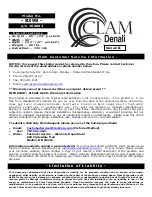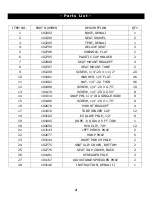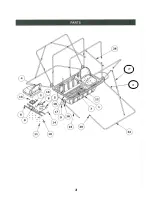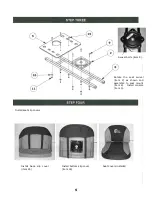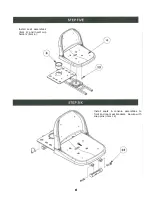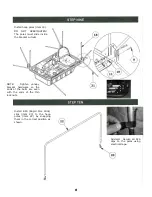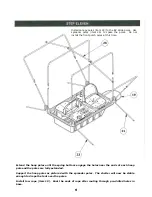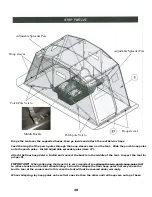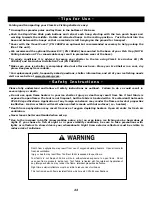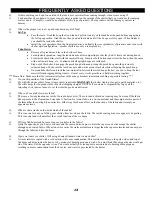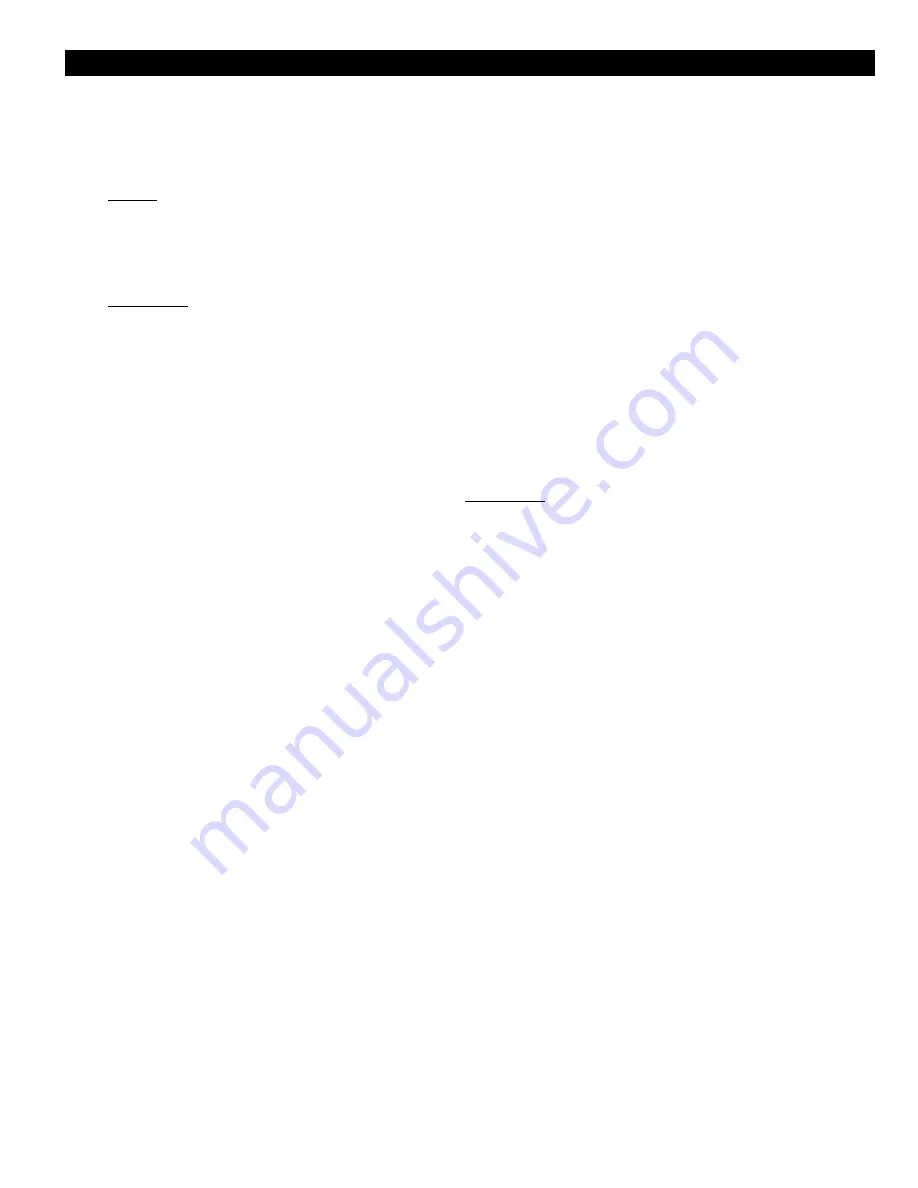
13
Q:
Is there anything can be put on outside of the tent to prevent water from coming through, when we are using it?
A:
Customers have been known to spray or apply water repellant on the outside of the shelter that you would use for camping
tents or boots. (Camp Dry would be an example of this type of product). These products will not damage your tent in
anyway.
Q:
What is the proper way to set up and take down my Fish Trap?
A:
Set-Up:
Face the seats. Grab the hoop that is on top and pull on it until you feel and hear the push buttons engaging in
the full open position. Grab the next hoop and do the same until all the hoops are fully open. When finished,
you should be inside the shelter.
Install the roof spreaders, then the front spreader(s), and finally the rear spreader(s). (Spreader count varies with
shelter style/configuration – smaller shelters use only a rear spreader).
Take-Down:
Remove all spreaders and lay in the bottom of base.
For adjustable spreaders, snug the tension knobs after compacting so that they don’t vibrate out during transit.
From inside the shelter, start with the rear wall hoop. Compress both buttons and retract the hoop, then the same
with next inward hoop, etc. Continue until all upright hoops are collapsed.
Step out of the shelter, disengage the porch hoop buttons and swing the porch hoop onto the previously
retracted hoops. Make sure the tent does not catch on the mount brackets while collapsing the porch hoop.
Go around the shelter and tuck the tent material in between the rested hoops the best you can to keep the tent
material from dragging during transit – a travel cover works great here to hold everything together.
***Please Note: Make sure that the tent material is clear of the canopy brackets to minimize rubbing or possible tearing. ***
Q:
Do you ship outside of the United States?
A:
We will take phone orders for any item or parts required to
MAINTAIN
the shelter (tents, poles, parts, patch material, etc.)
We will charge for the product plus the actual shipping charges. It will be the customer’s responsibility to pay all the
importing costs (duties, taxes, etc.) at the time the goods are delivered.
Q:
Why can I see pin holes in my fabric?
A:
There are a few explanations as to why those pin holes exist. The color and/or black-out coating may be worn off the fabric
due exposure to the elements and wear due to friction. Ice Armor fabric is a woven material and these pin holes are parts of
the thread that the coating did not attach to. Either way this has no effect on the function of the fabric and is simply an
appearance issue.
Q:
Why are there cracks on the inside finish of the fabric?
A:
This is normal, when you fold up your shelter, lines develop in the fabric. The inside coating may even appear to be peeling.
This is normal and will not affect the overall function of the ice house.
Q:
Will my fish house leak because I can see pin holes in the fabric?
A:
Quite the opposite, as you heat your house and the snow and ice begins to melt, the vapors can better escape the shelter
through an uncoated fabric. When it snows or rains, the water molecules are larger than the vapor molecules and cannot pass
through the fabric and into the house.
Q:
It gets wet in my ice shelter. Will using a heater eliminate water in my shelter?
A:
A warm interior coupled with a cold exterior will cause condensation. This moisture collects on the poles, sides, and top of
the house and drips inside the house. A by-product of burning propane is water. You may think that a bigger heater would get
rid of the water, but the opposite is true. You would actually be creating more moisture due to burning more propane,
resulting in more condensation from the heat, ice, and water vapor created by the heater.
FREQUENTLY ASKED QUESTIONS
Содержание 8398
Страница 3: ...3 27 21...
Страница 4: ...4 Install pole mount brackets item 16 Install seat mount brackets item 7...

